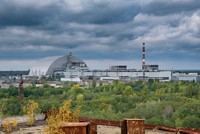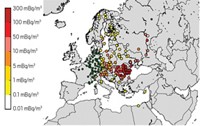Advertisement
Grab your lab coat. Let's get started
Welcome!
Welcome!
Create an account below to get 6 C&EN articles per month, receive newsletters and more - all free.
It seems this is your first time logging in online. Please enter the following information to continue.
As an ACS member you automatically get access to this site. All we need is few more details to create your reading experience.
Not you? Sign in with a different account.
Not you? Sign in with a different account.
ERROR 1
ERROR 1
ERROR 2
ERROR 2
ERROR 2
ERROR 2
ERROR 2
Password and Confirm password must match.
If you have an ACS member number, please enter it here so we can link this account to your membership. (optional)
ERROR 2
ACS values your privacy. By submitting your information, you are gaining access to C&EN and subscribing to our weekly newsletter. We use the information you provide to make your reading experience better, and we will never sell your data to third party members.
Environment
Korean Blast Put Detectors On Spot
Monitoring system for explosions has again worked as designed
by Michael Heylin
October 16, 2006
| A version of this story appeared in
Volume 84, Issue 42
The consensus of scientists involved in nuclear nonproliferation is that the big underground disturbance in North Korea last week was not an earthquake nor was it generated by conventional explosives. It was almost certainly a nuclear test that did not go quite as planned.
There is also agreement that the scientific monitoring system to detect nuclear explosions again worked well, with real-time detection of the blast and rapid identification of its location in the remote northeast of the country.
At press time, all the evidence was still seismic. Definitive confirmation of a nuclear explosion must await the collection and analysis of radionuclides leaked from the test site. This analysis will provide details of the construction of the device and possibly clues as to why its explosive yield was lower than expected for a first test.
The test registered around 4.0 on the Richter scale, indicating an explosive yield of between about 500 and 1,000 tons of TNT.
Richard L. Garwin, a key designer of the hydrogen bomb in the 1950s and a member of science- and defense-related government boards, explains that other nations' initial tests have been in the range of 5,000-15,000 tons for a relatively simple starter warhead.
He describes the North Korean test as a fizzle and a "waste of plutonium." He speculates the low yield was due to either poor design or preignition-the blowing apart of the device before it had fully functioned.
Paul G. Richards, of Columbia University's Lamont-Doherty Earth Observatory, and who has long been involved in the study of nuclear weapons tests, stresses that a 500-1,000-ton TNT explosion is still enormous. He says the seismograph of the North Korean explosion is different from those for earthquakes or conventional explosions. It also indicates the blast was shallow, a characteristic of a test.
Peter Zimmerman, an arms control expert now at King's College London, comments that "the North Koreans may have just taken the gold medal for the world's worst first nuclear test."
The Comprehensive Nuclear Test Ban Treaty calls for establishment of a worldwide monitoring system composed of 321 seismic, radionuclide, hydroacoustic, and infrasound sensors around the world. By the end of last year, 219 had been installed and another 37 were under construction.
The seismic aspect of this approach has already demonstrated its worth. In August 1997, seismologists challenged a U.S. charge that the Russians had conducted a test at their old test site on the island of Novaya Zemlya. The scientists determined that the seismic event that triggered the alarm was from a small earthquake 60 km offshore.
Seismologists also promptly located the series of Indian and Pakistani nuclear tests in May 1998, although there is still some dispute about two very low yield tests claimed by India.









Join the conversation
Contact the reporter
Submit a Letter to the Editor for publication
Engage with us on Twitter